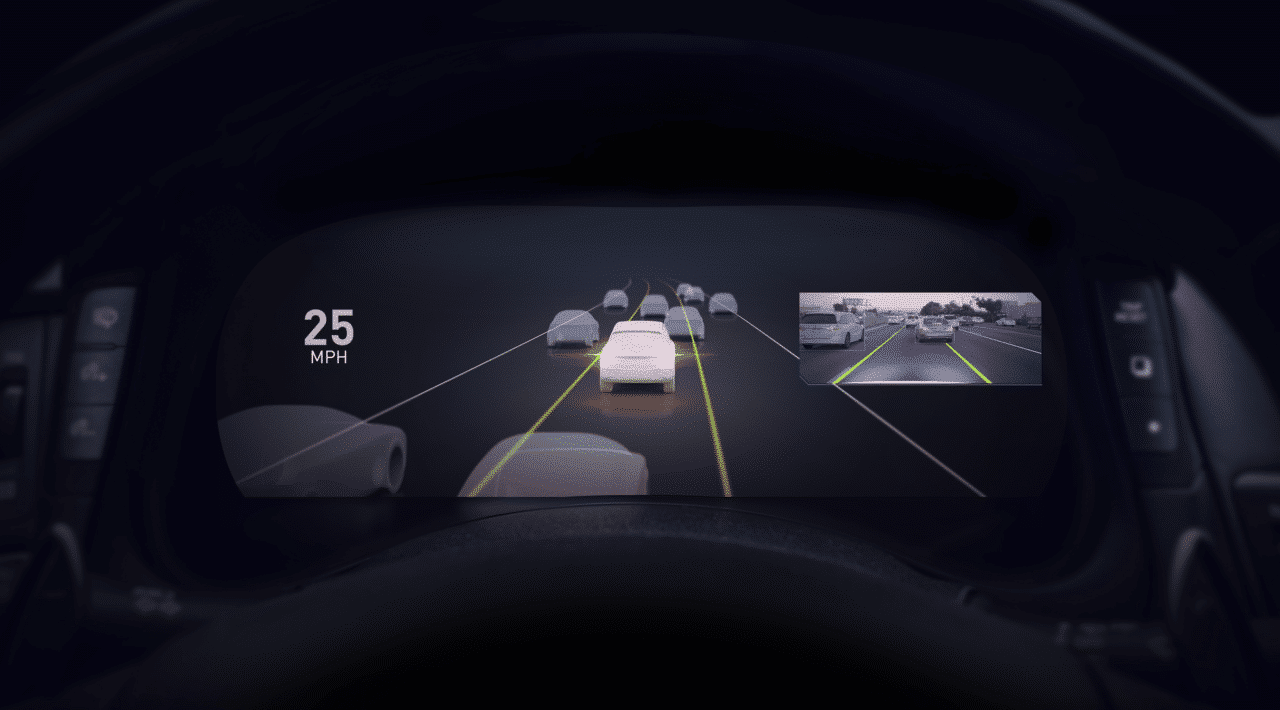The Society of Automotive Engineers has designated six categories of autonomous driving, ranging from Level 0 to Level 5. However, the ongoing development of self-driving cars has produced advanced technologies that can improve vehicle safety now, adding new distinctions to automated and autonomous driving features.
Level 2 automated driving is defined as systems that provide steering and brake/acceleration support, as well as lane centering and adaptive cruise control. Even if these technologies are activated, the human at the wheel must be driving and constantly supervising the automated features.
Though these systems have helped prevent and mitigate traffic accidents, they are still far from perfect.
What Is Level 2+ Automated Driving?
Level 2+ adds in surround perception and AI to improve the safety and convenience of human-driven vehicles. While the driver is still responsible for the car, the platform can perform automated maneuvers for a more seamless driving experience — such as making highway entrances and exits, lane changes and merges.
Level 2+ also includes intelligent cockpit services, such as driver monitoring, AI copilot technology using voice and gesture recognition, and advanced in-cabin visualization of the vehicle’s perception.
Breakthroughs like the NVIDIA Xavier system-on-a-chip (SoC) make these Level 2+ capabilities possible, fitting high-performance, energy-efficient compute into a compact package to power AI inside production vehicles.
Not Level 2, Not Yet Level 3
Automakers have already introduced Level 2 vehicles that rely on forward-facing sensors to provide advanced driver assistance systems.
The next step up, Level 3, begins to remove the human from the driving equation. These systems can fully drive the vehicle under limited and defined conditions, such as highway traffic, and the human is not actively driving while they are in use. However, the driver must be ready to take back control from the system whenever it’s requested.
Level 2+ systems don’t quite reach these capabilities. While they use AI to improve upon Level 2 ADAS, they still require consistent driver control. Rather, it uses AI to improve upon current Level 2 advanced driver assistance technology, requiring a new type of classification.
Coming to Roads Near You
For a vehicle to become Level 2+, it needs surround sensors for 360-degree perception, as well as deep neural networks running in parallel for robust object detection. In short, these systems require much more compute than currently exists in cars today.
That’s why NVIDIA developed DRIVE AutoPilot — to bring this crucial safety technology to public roads sooner. The platform combines the high-performance, energy-efficient compute of DRIVE Xavier with the extensive DRIVE Software suite to enable these functions in production vehicles.
And it’s catching on. Leading Tier-1 supplier Continental is already leveraging the Level 2+ DRIVE platform to develop AI systems for upcoming vehicles. The system will run on a scalable, affordable architecture based on Continental’s portfolio of sensor and Automated Driving Control Unit technology, powered by DRIVE AutoPilot.
Global supplier ZF’s Level 2+ scalable ProAI supercomputer will also be based on DRIVE AutoPilot. The open, flexible, modular and scalable ZF ProAI product family allows for just the right configuration of any self-driving application — for a variety of industries and across virtually all levels of automated driving. The system will begin production next year, the company said at CES in January.
It’s not only suppliers. Late last year, Volvo Cars announced that it would base its upcoming Level 2+ vehicles, which are set for production in the early 2020s, on NVIDIA DRIVE. The companies are working together to develop automated driving capabilities, integrating 360-degree surround perception and a driver monitoring system. The NVIDIA-based computing platform will enable Volvo to implement new connectivity services, energy management technology, in-car personalization options, and autonomous drive technology.
While developers continue to work to bring the robocars of the future to public roads, Level 2+ delivers the safety and efficiency this technology promises, today.
Learn more about autonomous driving on the NVIDIA Technical Blog.
